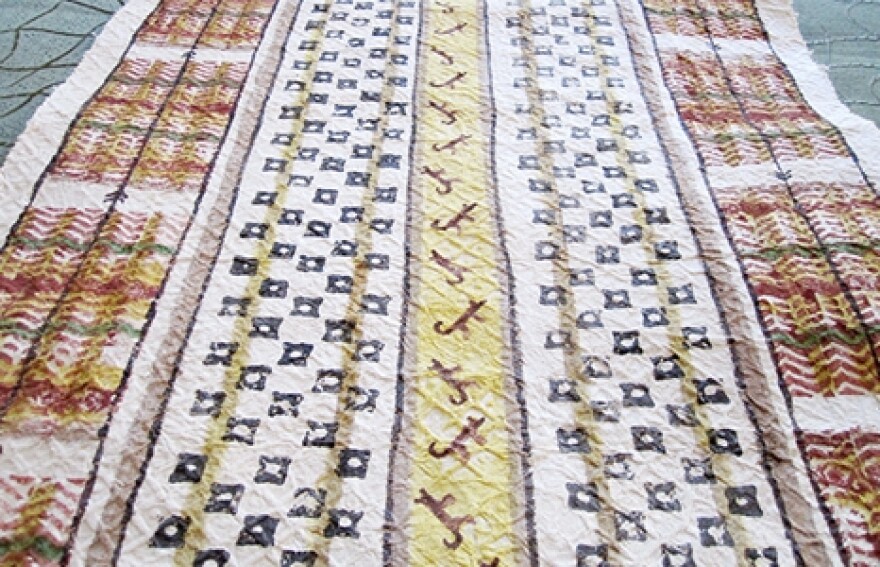Project-based learning may be a buzzword in education, but the idea is anything but new. Before textbooks, ancient Hawaiian traditions were passed down generation to generation through hands-on learning. Educators at Roosevelt High School are hoping to find student success in applying this same approach. HPR reporter Ku?uwehi Hiraishi has this story.
Kapa is the traditional bark cloth used for clothing by ancient Hawaiians.

The process for making kapa is tedious and the students in Roosevelt High School’s K?lia Program are in the finishing stages of producing their very own. Students have harvested bark from the wauke or paper mulberry tree, they fashioned their own tools, and they’ve pounded the bark to a fine cloth. Here’s Roosevelt senior Ikaika Tamashiro.

“To be honest, before we did this, you know I knew a little bit about kapa but I never know too much. But doing this I learned a lot,” says Tamashiro.

Tamashiro and his classmates have spent the entire fall semester on their kapa and today they’re on a field trip to harvest bamboo in Nu?uanu.
“Today, we visited Kaniakap?p? to go pick bamboo,” says Ikaika Dutro, a teacher at Roosevelt High School, “and what this class is about is allowing our students to experience a type of learning from a more cultural perspective.”
Ikaika Dutro teaches Hawaiian language and hula at Roosevelt High School. He says the project-based course is designed to engage students who may not otherwise be engaged by traditional classroom settings.

“You know taking notes, staying in the classroom, following what the teacher says, looking at the board, taking a test,” says Dutro, “This gives them an opportunity to learn from a different perspective outside, hands-on, getting down with the ‘?ina, getting in touch with their ancestors.”
Roosevelt junior La’i Keaniniwai chimes in.

“We get to see where the things that we’re making is from. We get to go see where the wauke is made from, we get to see where all of the tools are coming from,” says Keaniniwai, “It’s not just oh yeah we just got it from our teachers or like we didn’t buy it from the store. We came out here, we picked it ourselves.”
Roosevelt’s K?lia Program enlists the help of Kamehameha Schools Cultural Resource Specialist Earl Kawa?a, who guides the students throughout the entire kapa-making project.

“Our ancestor were well-versed in the area of teaching, dissemination of information, and handing that information down,” says Kawa?a, “f we do like our ancestors did, we should not be surprised…”
…should not be surprised that students succeed. Here’s Tamashiro.
“So we get to make the kapa and when us seniors graduate we get to wear it with us when we’re walking,” says Tamashiro, “I don’t know anybody else who going walk down the aisle wearing kapa and knowing that you built it from scratch.”
“Their confidence is high, their confidence. I focus heavy on attitudes and behavior for academic and lifelong learning success,” says Kawa?a, “If the attitude is good, they will succeed.”




